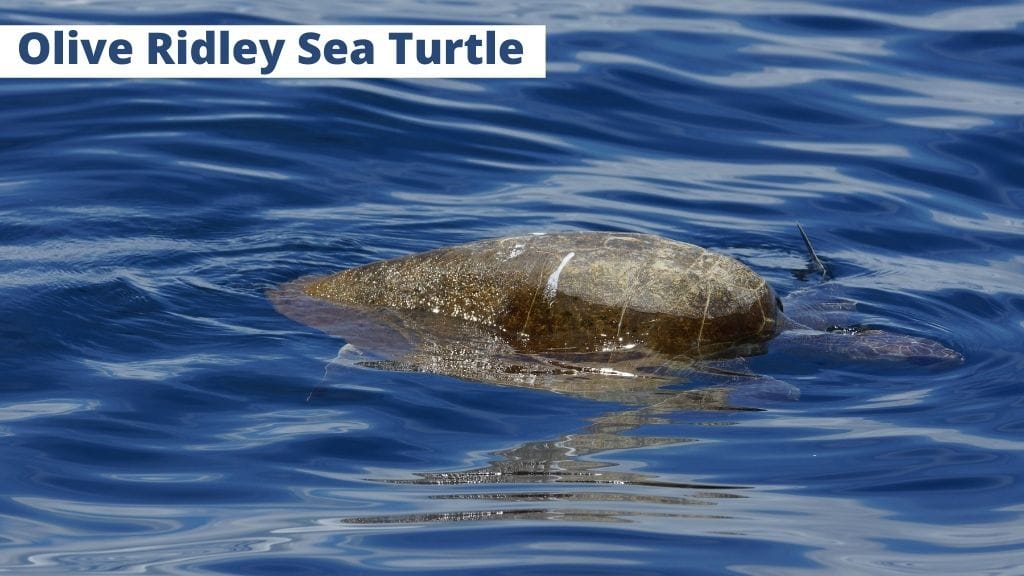Lepidochelys olivacea (Olive Ridley Sea Turtle)
Home > Turtle Database > Lepidochelys olivacea (Olive Ridley Sea Turtle)

Lepidochelys olivacea is a small sea turtle that is known for its olive-colored shell. It is often seen nesting on tropical beaches, with groups sometimes gathering in large numbers.
Native Turtle Species Map – Find Turtles by Region
Scientific Classification
- Kingdom: Animalia
- Phylum: Chordata
- Class: Reptilia
- Order: Testudines
- Family: Cheloniidae
- Genus: Lepidochelys
- Species: L. olivacea
Common Names
Olive Ridley Sea Turtle and Pacific Ridley.
This Hilarious Turtle Book Might Know Your Pet Better Than You Do
Let’s be real—most turtle care guides feel like reading a textbook written by a sleep-deprived zookeeper.
This one’s not that.
Told from the snarky point of view of a grumpy, judgmental turtle, 21 Turtle Truths You’ll Never Read in a Care Guide is packed with sarcasm, sass, and surprisingly useful insights.
And hey—you don’t have to commit to the whole thing just yet.
Grab 2 free truths from the ebook and get a taste of what your turtle really thinks about your setup, your food choices, and that weird plastic palm tree.
It’s funny, it’s honest, and if you’ve ever owned a turtle who glares at you like you’re the problem—you’ll feel seen.
Identification
- Description
They have a heart-shaped, olive-colored carapace. Their shell is smooth, and they have a relatively small head. - Sexual Dimorphism
Females are slightly larger than males. Males often have a longer tail.
Check more turtles from the Lepidochelys genus
Native Origin and Distribution
- Geographical Range
They are found in warm waters of the Pacific, Atlantic, and Indian Oceans. Their nesting sites are often on sandy beaches along tropical coasts.
Preferred Habitat
They prefer warm, tropical waters and shallow coastal areas. They often feed near coral reefs and estuaries.
Behavior
- Feeding Habits
They eat algae, small crabs, shrimp, jellyfish, and other small marine animals. Their diet varies by region. - Predators
Hatchlings face threats from seabirds and mammals like raccoons and foxes. Adults can be attacked by sharks and large predators in the ocean.
Reproduction
- Breeding Season
They breed in warmer months. Large groups of females often nest together during specific times of the year. - Reproductive Method
They lay their eggs on sandy beaches, digging shallow nests. Many females lay eggs in the same place, known as an arribada.
Conservation
- Extinction Status
They are classified as vulnerable. Their numbers are declining, though some nesting sites are still large. - Threats
Egg poaching, habitat loss, and pollution harm their populations. Fishing nets and boat strikes are also problems. - Conservation Measures
Protecting nesting beaches, reducing plastic waste, and regulating fisheries help these turtles. Many groups watch nesting areas and protect eggs until they hatch.
Economic Importance
They support local ecotourism in many places. Visitors come to watch them nest and to see hatchlings reach the ocean.
Interesting Facts
They are famous for their synchronized mass nesting events called arribadas. Hatchlings often emerge at night and head toward the sea guided by moonlight.

About Author
Muntaseer Rahman started keeping pet turtles back in 2013. He also owns the largest Turtle & Tortoise Facebook community in Bangladesh. These days he is mostly active on Facebook.












